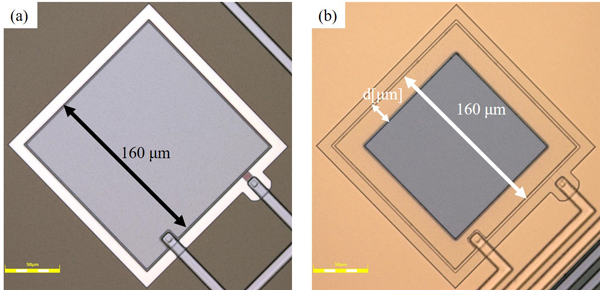ED2-6
Superconducting Tunnel Junction X-Ray Detector with Optimal Edge Shield to improve the energy resolution
Dec.1 19:30-19:45 (Tokyo Time)
Saitama University Japan1
AIST Japan2
X-ray absorption fine structure (XAFS) analysis in soft X-ray region is useful for analyzing dopants of light elements in next generation semiconductor materials such as SiC and GaN. However, the energy resolution (ΔE) of semiconductor detectors such as silicon drift detectors (SDDs) is not sufficient to analyze those light elements, because a high ΔE of less than 15 eV is necessary to identify characteristic X-rays of the diluted dopants in X-ray spectra from compound semiconductor samples. On the other hand, our superconducting tunnel junction (STJ) detectors exhibit best ΔE of about 5 eV, which is about 10 times higher than that of the SDDs. In fact, by our XAFS instrument with an STJ detector, XAFS spectra of N dopants of 300 ppm in a SiC were obtained, which is the first experimental XAFS spectra in the world [1]. However, since typical dopant concentration in practical compound semiconductor devices is less than 100 ppm, further improvement of the ΔE is required to analyze the dopant in the practical devices. Currently, the ΔE of our STJ has not reached its theoretical limit. One of the reasons of the ΔE degradation is a deterioration of the X-ray pulse height due to the increase of the loss of the quasiparticle(QP) generated by the X-ray when X-ray is absorbed in the fringe area of the STJ because near the fringe, the diffusion area the QPs is likely to be small due to the limitation of the QP diffusion by the STJ edges, which leads to enlarging their density and then their recombination. Therefore, we developed the STJs to reduce the X-ray absorption in the fringe area by limiting the X-ray irradiation area in the center of the STJs [2]. The ΔE of the STJs with edge shield could be improved about 60 %, but the active area was a quarter.
In this study, in order to improve the ΔE with keeping the active area, the size of the STJs with edge shield is increased from 100 µm to 160 µm square. In addition, in order to determine the optimal size, the STJs with edge shield of different size (Fig.1) were fabricated. The ΔE of STJ (d=30 µm) was improved about 35 % compared to the STJ (100 µm square) while keeping the same active area.
Fig.1 Microscope images of STJ (a) without edge shield (b) with edge shield (d=0, 10, 20, 30, 40 μm)
[1] M.Ohkubo, et al., Sci Rep, vol 2(2012).
[2] Y.Fujisawa, et al., The Japan Society of App Phys, 20p-212B-9, (2018).
Keywords: Superconducting Tunnel Junction, X-ray detector
